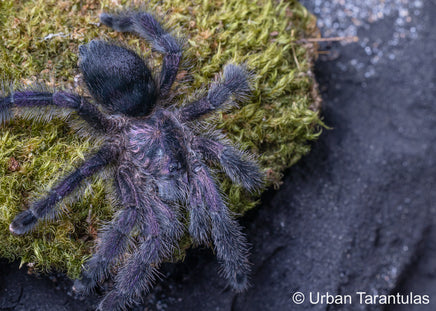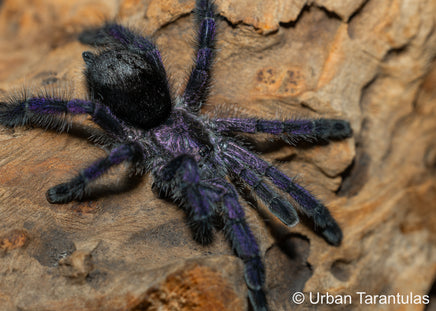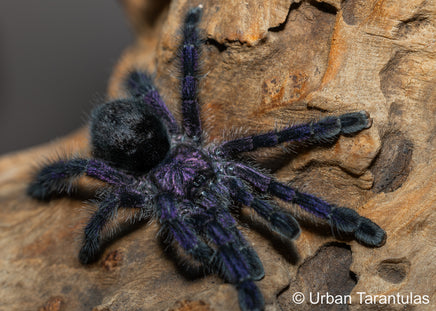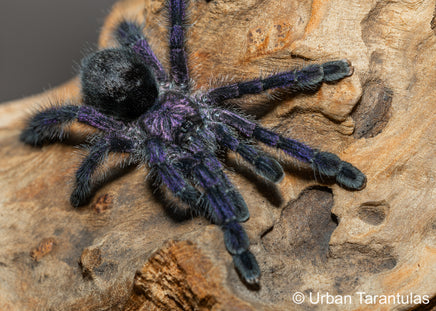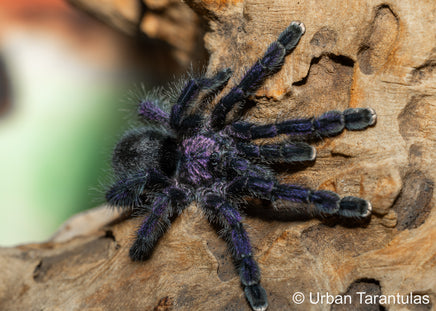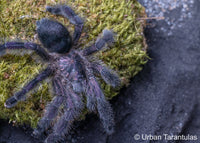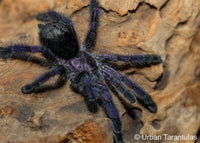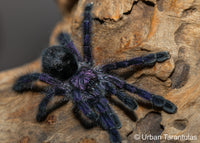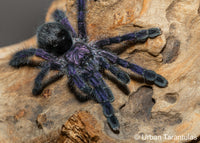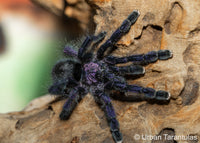Skip to product information
Avicularia purpurea — Purple Pinktoe Tarantula
One of the most visually stunning arboreals, the Avicularia purpurea glows with an iridescent violet sheen that deepens as it matures. Calm, curious, and active, this Ecuadorian native is a favorite among keepers who love display tarantulas with personality and color. A beautiful balance of elegance and ease.
| 📢 Special Notices | |
|---|---|
| I’ve got a full care and setup video for this species on my YouTube channel — check it out for detailed enclosure examples, feeding, and live behavior clips. Perfect for those new to Avicularia species. | |
| 🪴 Care Details | |
| 🌡️ Temperature | 75–85°F (24–29°C) |
| 💧 Humidity | 75–80% with good airflow |
| 🏠 Housing | |
| Babies | Vial up to 5" tall × 2" dia with cross ventilation. FREE vial at checkout if requested. |
| Juveniles | 7–8" tall enclosure with vertical cork or branch and web anchor points. |
| Adults | 12–16" tall enclosure; keep slightly moist substrate, ample ventilation, and cork tube hide. |
| 🍽️ General Diet | |
| Crickets + roaches (Dubia, Red Runner, Lobster, Madagascar Hissing). Babies: baby crickets/roaches. If prey too big, pre-kill and leave overnight; remove leftovers. Occasionally, large adults may take a pinky or feeder lizard as a rare treat. We never use pinhead crickets as they lack sufficient nutrition. | |
| 📚 In-depth Facts | |
| 🕷️ Latin name | Avicularia purpurea |
| 📛 Common name(s) | Purple Pinktoe Tarantula |
| 🌡️ Temperature | 75–85°F (24–29°C) |
| 💧 Humidity | 75–80% |
| 📍 Locale | Ecuador (rainforest regions) |
| 🏷️ Category | Arboreal; light webbing; builds silk retreats high up |
| 📏 Size | ~5–6" diagonal leg span (female); males slightly smaller |
| 🪶 Urticating hairs | They do not kick urticating hairs. |
| ⏳ Growth rate | Moderate |
| 🧭 Life span | Females 8–10 years, males 3–4 years |
| 🍽️ Feeding | Active feeder; responds quickly to prey |
| 🎯 Recommended levels | Beginner-friendly (great temperament, easy care) |
| 🎁 Follow me on social media | |
|
🎁 Follow me on social media and receive an additional freebie* *Email me after you follow to let me know you’re a follower so I can include it. | |
| ⚠️ Safety Disclaimer | |
|
Safety Disclaimer: Experiencing a tarantula bite is an extremely rare occurrence, and it's important to note that there have been NO recorded fatalities due to a tarantula bite. The venom potency varies across species, with Old World tarantulas generally having stronger venom than their New World counterparts. Within the Old World category, the Poecilotheria genus is known for having particularly potent venom. It's crucial to approach tarantulas with respect and understanding. If you happen to get bitten, which is unlikely, the key is to stay calm. In most cases, the discomfort is superficial and subsides within a few minutes to a few hours. However, bites from species with more potent venom may result in symptoms lasting up to a week. Remember, larger tarantulas tend to have more venom than smaller ones. Please be aware that I cannot assume responsibility for bites. Tarantula handling should be done at your own risk. In my 13 years of experience with these creatures, I have only been bitten once, by a species with highly potent venom. While the experience was painful, the symptoms had completely disappeared after a week. Handle tarantulas responsibly, and always prioritize your safety and the well-being of the tarantula. | |
